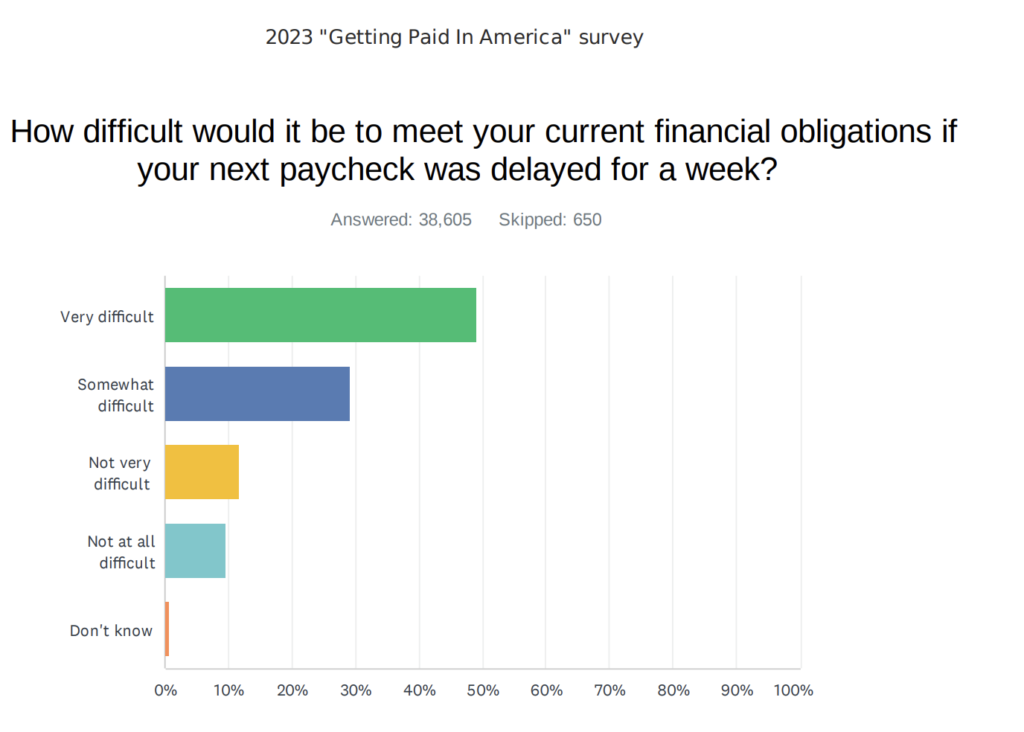When it comes to business operations, a well-structured payroll schedule is more than just a mere administrative task; it’s a critical component that influences financial stability, employee morale, and overall operational efficiency.
Creating a payroll schedule can be tricky — especially if you’re managing hourly workers with inconsistent shifts and wages. To make the process as smooth as possible, we’ve got all the factors you need to consider before choosing a schedule, and eight of the top best practices to ensure your payroll system is as effective as possible.
Factors to Consider When Creating a Payroll Schedule
Weekly, bi-weekly, semi-monthly, or monthly? When deciding on a payroll schedule, you should first take into account the following factors:
Company Needs and Budget
As a business owner, creating a payroll schedule that aligns with your company’s particular needs and budget is a fundamental aspect of responsible financial management. Because the payroll process is not one-size-fits-all, it must be tailored to suit the unique demands and resources of your company.
That means accounting for factors such as the number of employees, their work hours, and any specific industry regulations that may apply. To maintain financial stability and ensure your business remains profitable, you’ll also need to adhere to a budget. And while striking a balance between meeting employee compensation expectations and managing operational costs can be tricky, it’s essential for sustainable growth.
Employee Needs and Preferences
By taking into account employees’ needs and preferences when crafting a payroll schedule, you can foster a positive work environment and nurture a motivated, engaged workforce. When you recognize that employees have diverse obligations, preferences, and financial commitments outside of work, you’ll be able to keep morale and satisfaction levels at an all-time high. Accommodating their preferences not only demonstrates empathy and a commitment to your team’s well-being, but also promotes a healthy work-life balance, leading to increased productivity, reduced burnout, and ultimately a more harmonious work environment.
Cash Flow Cycle
Cash flow is the lifeblood of any business, influencing the company’s ability to meet financial obligations and sustain day-to-day operations. By aligning payroll schedules with periods of positive cash flow, you ensure that you’ll have the necessary funds readily available to cover employee salaries. With this proactive approach, cash shortages can be prevented, and late or insufficient payments can be avoided. Additionally, financial stability builds trust with employees, as they can rely on receiving their compensation in a timely manner.
Industry Standards
Since industries often have established norms for pay frequencies and practices, adhering to these standards means you can demonstrate alignment and reliability. This helps attract and retain top talent, as potential employees may be deterred by irregular or non-standard pay schedules. In fact, a 2023 survey pointed out that over 50% of people would find it very difficult to meet their financial obligations if they didn’t receive their pay on time. Making sure your employees’ paychecks don’t get delayed isn’t just about meeting industry standards, but also about making sure you rightfully accommodate your workforce.

State and Federal Laws
State and federal regulations dictate various aspects of payroll, including minimum wage, overtime pay, tax withholdings, industry-specific, and record-keeping requirements. Failure to comply can result in serious consequences, including fines, lawsuits, and damage to your company’s reputation. Because these regulations may evolve over time, be sure to keep up with changes in labor laws and tax codes.
8 Best Practices for Effective Payroll Scheduling
1. Keep Track of Deadlines With Notifications and Reminders
The Department of Labor has stringent guidelines regarding when businesses need to submit employee payroll documents, be it paystubs, retirement statements, or tax forms such as W2s and W4s. Failing to meet these deadlines can result in substantial fines. To make sure you don’t overlook any crucial deadlines, integrate them into your payroll calendar well in advance and be sure to set up automatic notifications and reminders so you don’t miss any important dates.
2. Collect Real-Time Attendance Data to Avoid Last-Minute Delays
It’s typical for employees to submit their expense claims and overtime requests towards the end of each month. But doing so can leave you in a bind when you have to enter everything at the last minute. However, a good payroll management system can automatically gather and process all information in real time, ensuring a smoother and more efficient workflow.
3. Prioritize Data Security
A staggering 67% of organizations worry that their current data protection measures might not be sufficient to combat rising malware and ransomware threats. Like any corporate system that contains confidential information, payroll platforms require an additional layer of security that cannot be overlooked. Leading payroll solutions not only help you prioritize data loss prevention, but also offer built-in security features that reduce the likelihood of a data breach.

4. Ensure Consistent Communications With Employees Regarding Pay Frequencies, Dates, and Any Changes to the Schedule
Maintaining consistent communication with employees regarding pay frequencies, dates, and schedule changes is essential for creating effective payroll schedules. With clear and transparent communication, you can make sure that your employees are well-informed about their compensation. Consider establishing a reliable channel, such as email or a dedicated portal, for disseminating information. Additionally, aim to provide as much advance notice of any changes to the schedule so employees can plan accordingly.
5. Categorize Employees Correctly (Salaried, Hourly, Contract/Freelance) to Prevent Problems With Taxes
Classifying employees incorrectly happens more often than you might realize and mismanaged payroll procedures can lead to complications with the IRS. Understanding the difference between salaried employees versus hourly, independent contractors and freelancers, and exempt versus non-exempt employees, however, can help you navigate the complexities of payroll processing and taxation. By correctly categorizing your workforce, you can guarantee that your employees receive the benefits and protections they are entitled to based on their employment status.
6. Maintain Accurate Records to Simplify Reporting and Auditing Processes
Precise documentation of payroll transactions, including hours worked, wages earned, and tax withholdings, establishes a foundation of transparency and accountability in financial reporting. It facilitates compliance with legal and regulatory requirements and also streamlines the auditing process, making it more efficient and less prone to errors. Meticulous record keeping serves as a reliable reference point for any discrepancies or inquiries, and can be extremely helpful when you need to resolve issues promptly.
7. Instead of Using Manual Payroll Methods, Opt for Direct Deposit
When direct deposit is used instead of manual payroll methods, money is deposited directly into your employees’ designated bank accounts, eliminating the need for physical checks and reducing administrative overhead. Not only does it save time, but it minimizes the risk of lost or misplaced payments. Direct deposit also enhances security since electronic transfers are encrypted and safeguarded against the risks associated with paper checks. And it promotes timely payments, ensuring that employees receive their compensation on time, every time.
8. Implement Payroll Scheduling Software to Automate and Streamline Processes
There are many scheduling software options that can automate and streamline your payroll processes. For many business owners, opting for a software solution allows them to log on from anywhere so they can complete their tasks — even from the convenience of their phone.
Master Your Payroll Scheduling With Nowsta
Whether you’re managing a flex workforce or salaried employees, Nowsta makes it easy to master your payroll system and create schedules that are tailored to your diverse workforce.
Our all-in-one powerful platform can do it all — from automating schedules and generating reports to tracking attendance and performance and so much more. By partnering with Nowsta, employers can proactively manage their employees, allocate resources effectively, and seamlessly adapt to evolving business needs.
Ready to get started? Get in touch today.
